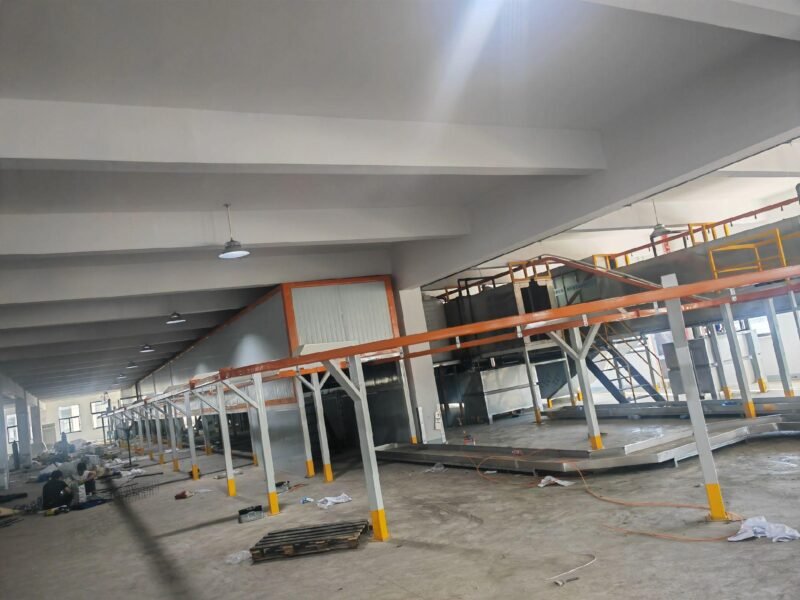
How to quickly cool down the high temperature of the product after electrostatic spraying?
How to quickly cool down the high temperature of the product after electrostatic spraying?
Great question! After **electrostatic spray coating**—especially **powder coating**—the product often exits the curing oven at **high temperatures (150°C–220°C / 300°F–430°F)**. Cooling efficiently is important to maintain production speed and prevent defects like surface dust or warping.
Here are **quick cooling methods** used in industrial settings:
—
### 🔄 **1. Forced Air Cooling (Most Common & Cost-Effective)**
– **How:** Large fans or air knives blow ambient or filtered air onto the product.
– **Benefits:** Inexpensive, simple to set up, works well for metal parts.
– **Consideration:** Ensure air is clean to avoid dust settling on the coating.
—
### 💨 **2. Chilled Air Cooling**
– **How:** Use of cooled air (via air chillers or refrigeration units) blown across the part.
– **Benefits:** Faster than ambient air, controls cooling rate to avoid thermal shock.
– **Best for:** Sensitive parts that need controlled cooling.
—
### 💦 **3. Water Mist / Spray Cooling (Careful!)**
– **How:** Light water mist or spray (often deionized) for rapid surface cooling.
– **Benefits:** Very fast cooling.
– **Risks:** Can damage uncured or semi-cured coatings, cause water spots, or corrode metal if not dried properly.
—
### 🌀 **4. Heat Exchanger Tunnel / Cooling Tunnel**
– **How:** Conveyor moves parts through a tunnel where heat exchangers or cooling coils absorb heat.
– **Benefits:** Controlled environment, consistent cooling.
– **Used in:** High-volume production lines.
—
### ⚠️ **Key Considerations**
– **Avoid thermal shock:** Cooling too fast, especially with water, can warp thin metals or crack coatings.
– **Air cleanliness:** Dust or debris in air can stick to freshly cured coatings.
– **Part thickness:** Thick metal takes longer to cool and may need staged cooling.
—
### ✅ **Quick Tip (Industry Standard Practice):**
Most powder coating lines rely on **forced ambient or filtered air cooling**, letting parts cool naturally with airflow for 10–30 minutes post-oven. Adding high-CFM blowers cuts cooling time significantly without quality loss.
—
Do you want suggestions based on **specific materials, production volume, or space constraints**? I can help narrow down the best option!
electrostatic powder coating technology
electrostatic powder coating theory
electrostatic powder coating thickness
electrostatic powder coating voltage
electrostatic powder coating vs powder coating
electrostatic powder coating wikipedia
electrostatic powder coating without baking
electrostatic powder coating without making
electrostatic powder coatings
electrostatic powder coatings definition
electrostatic powder combustible dust k value

